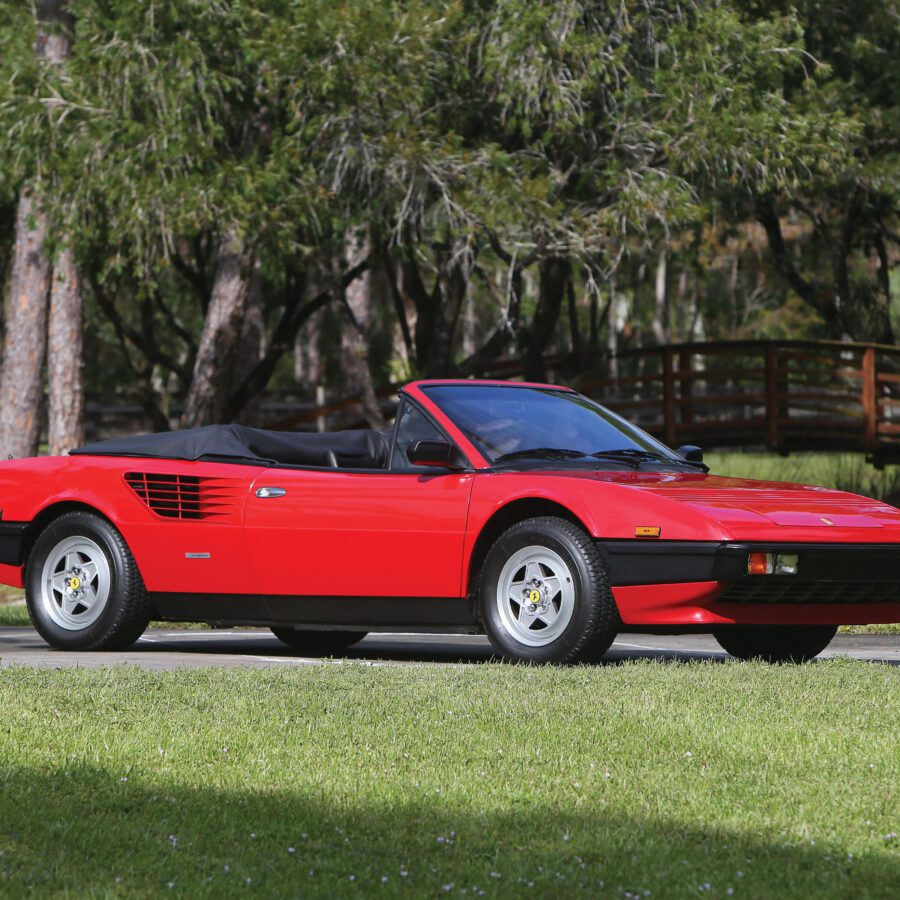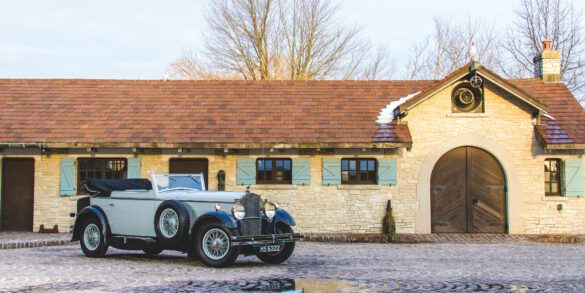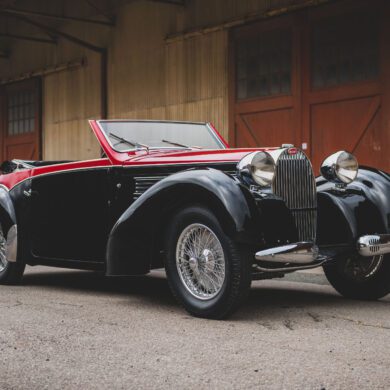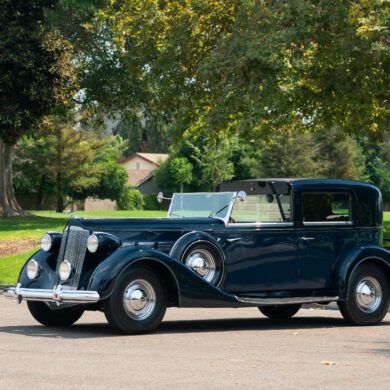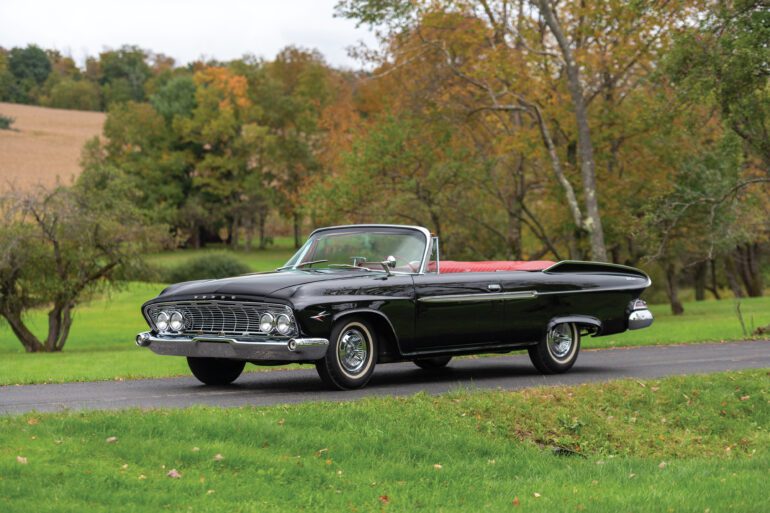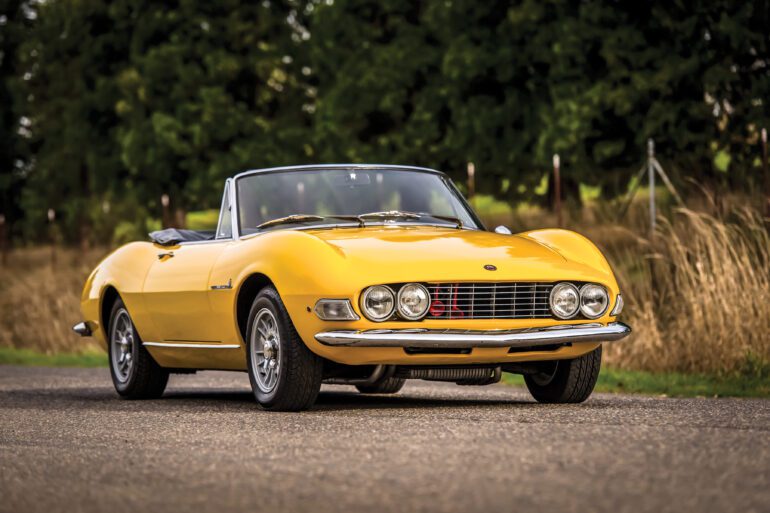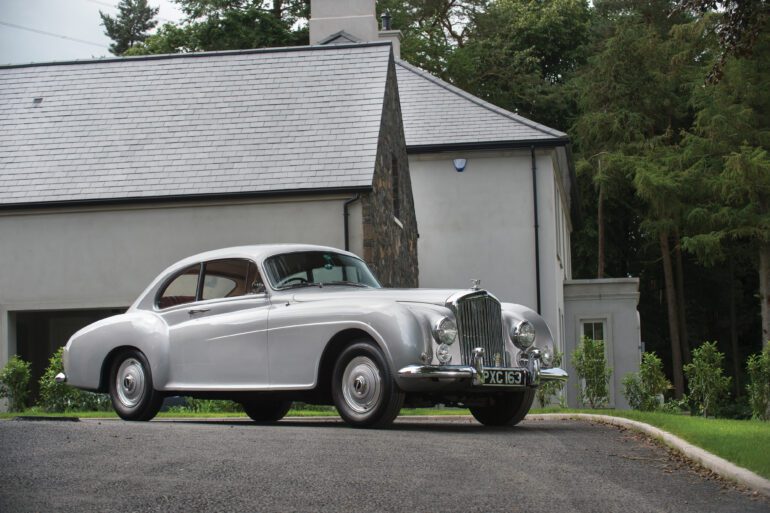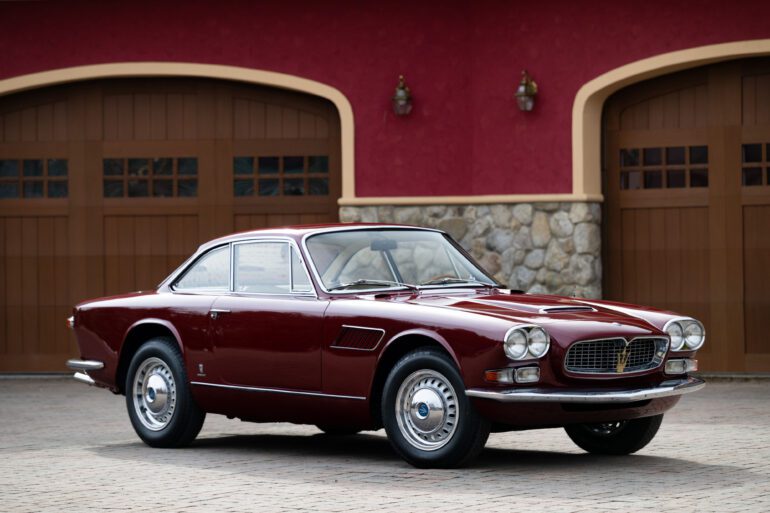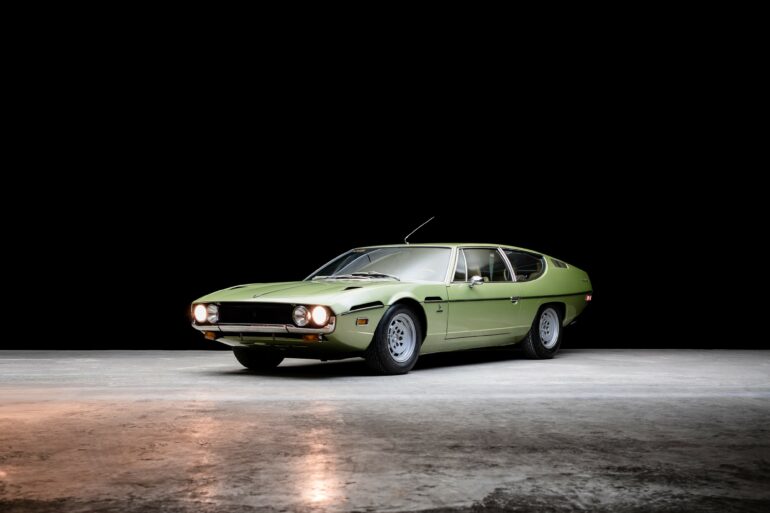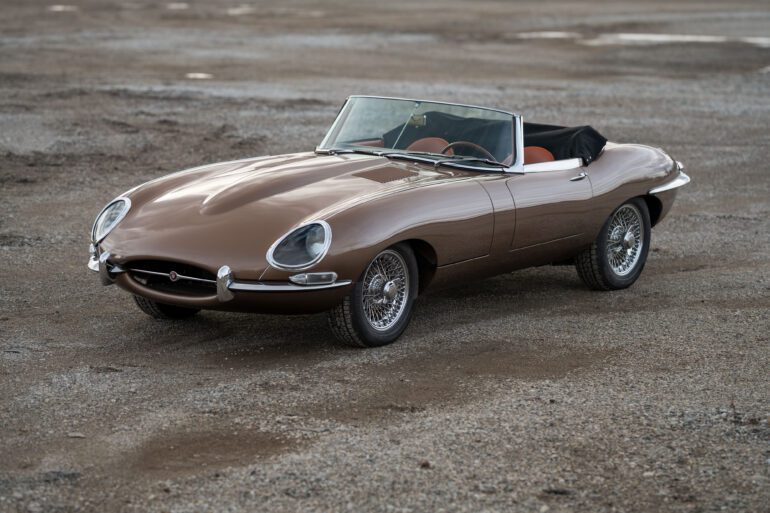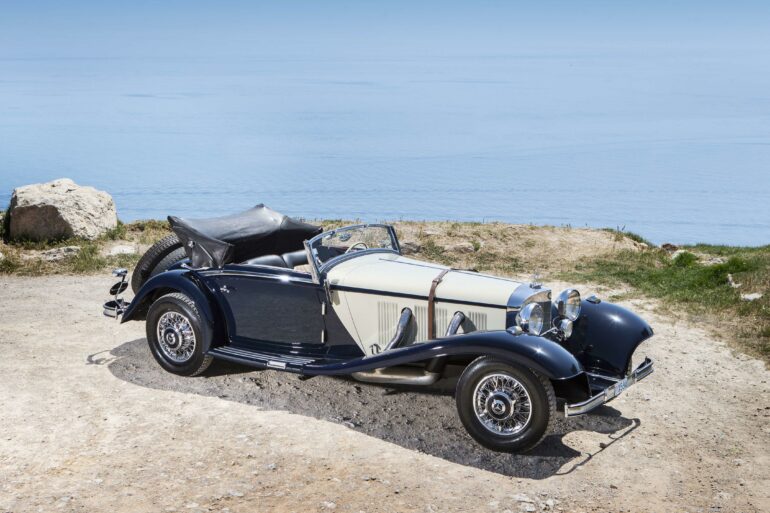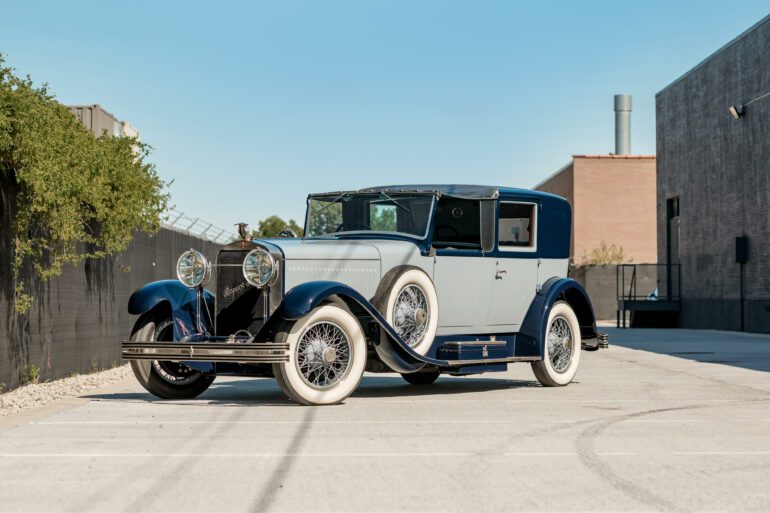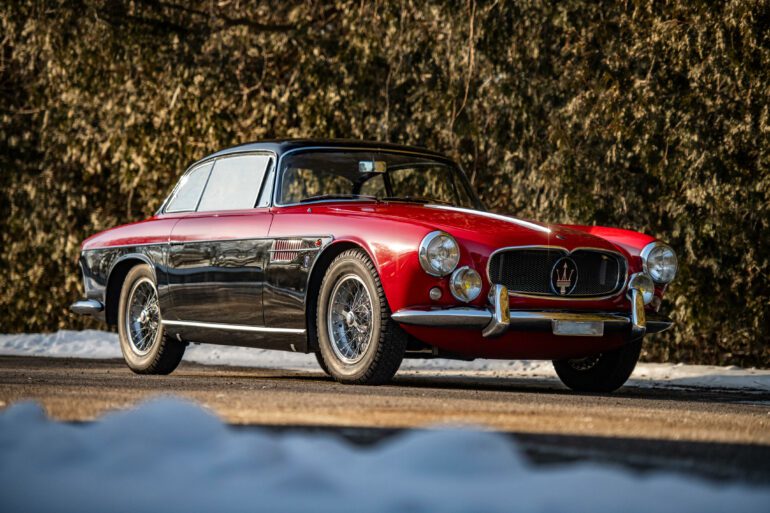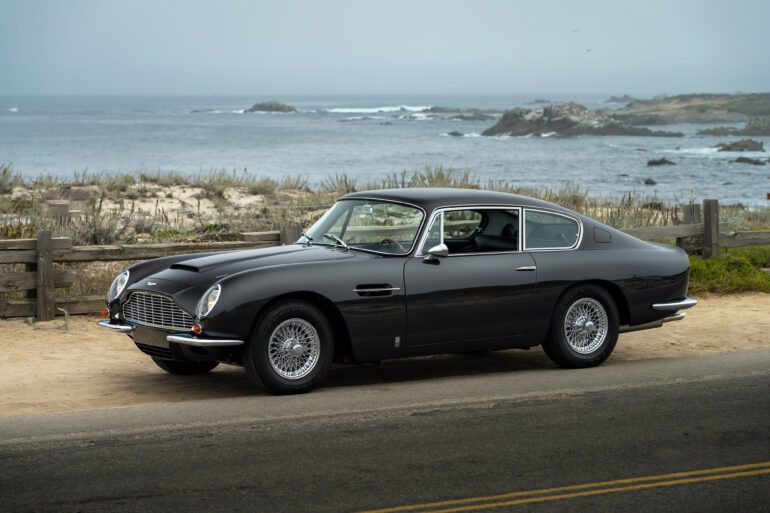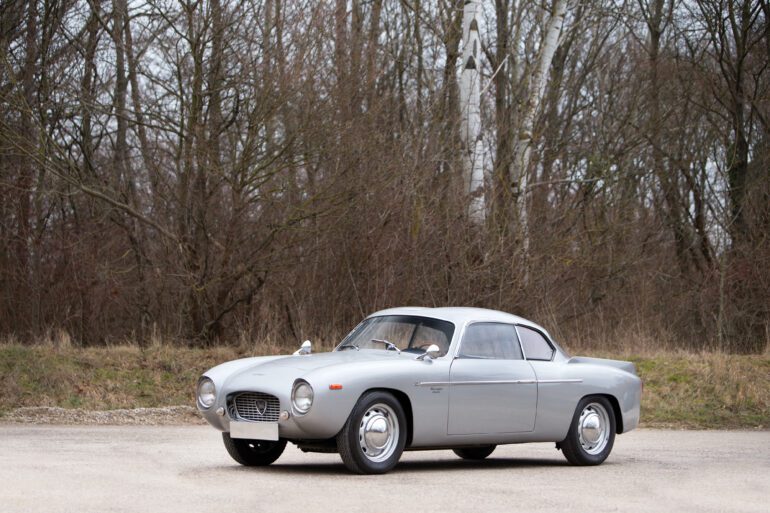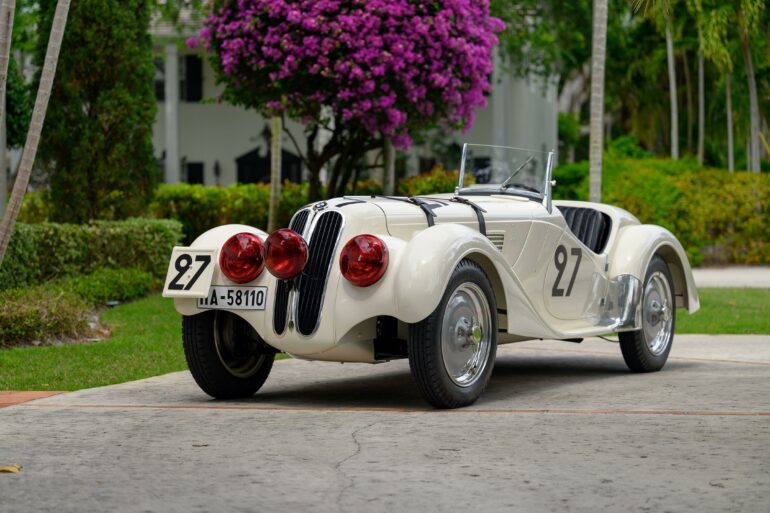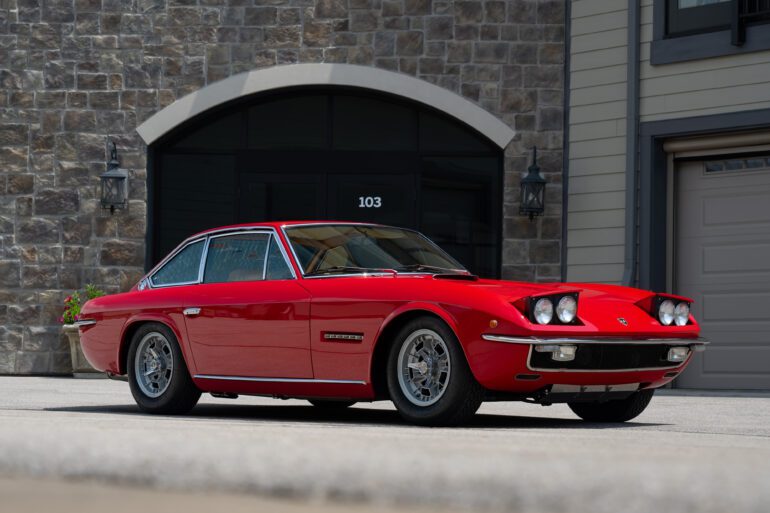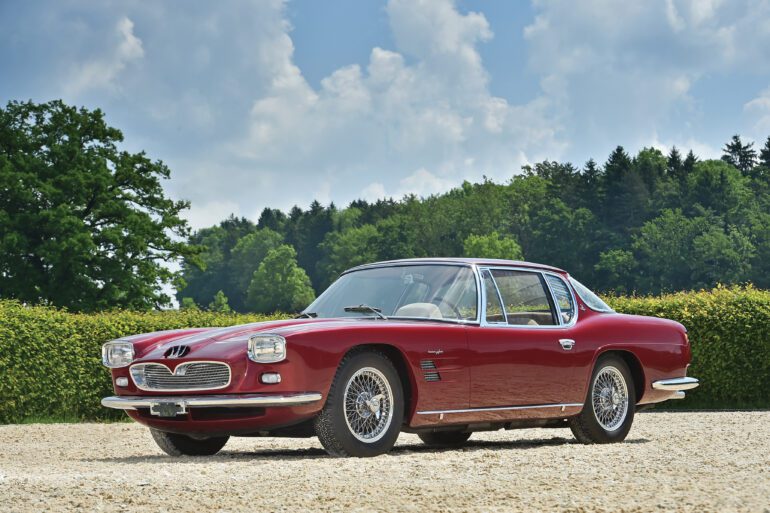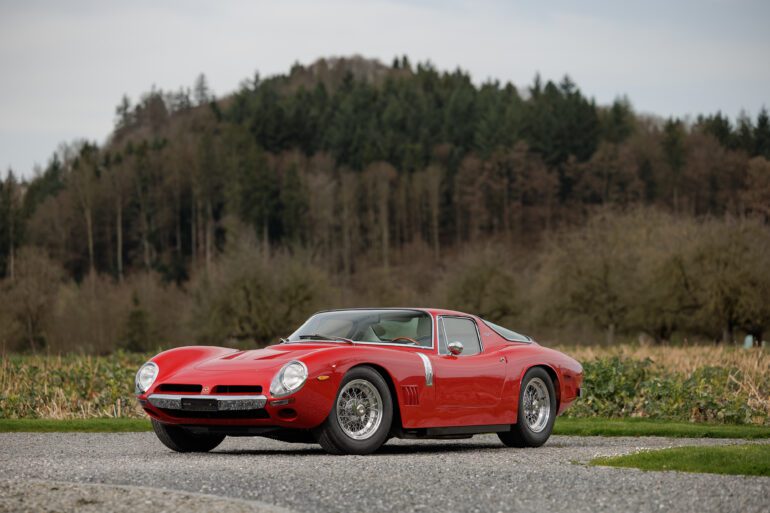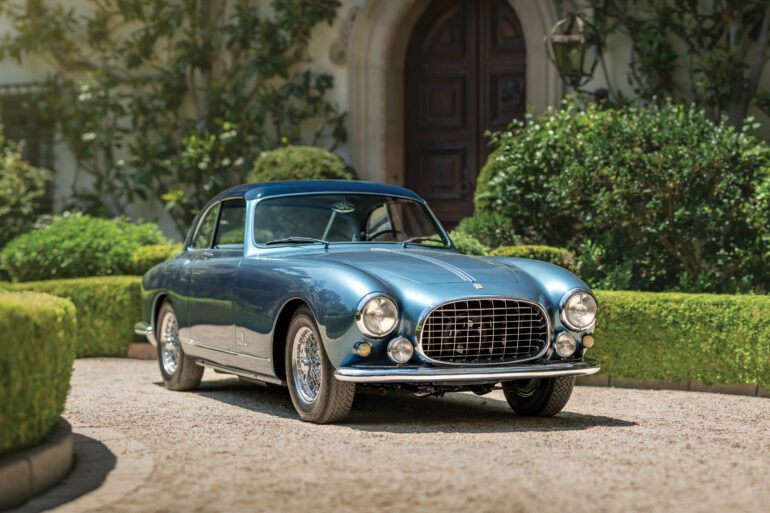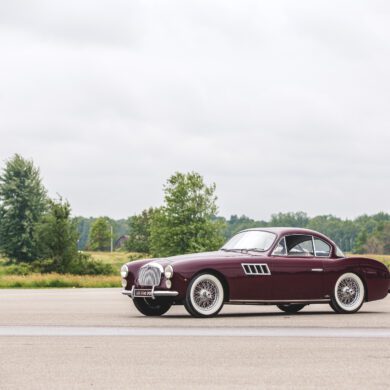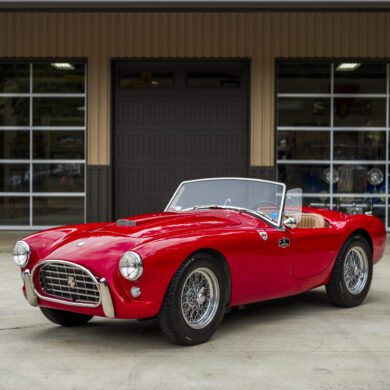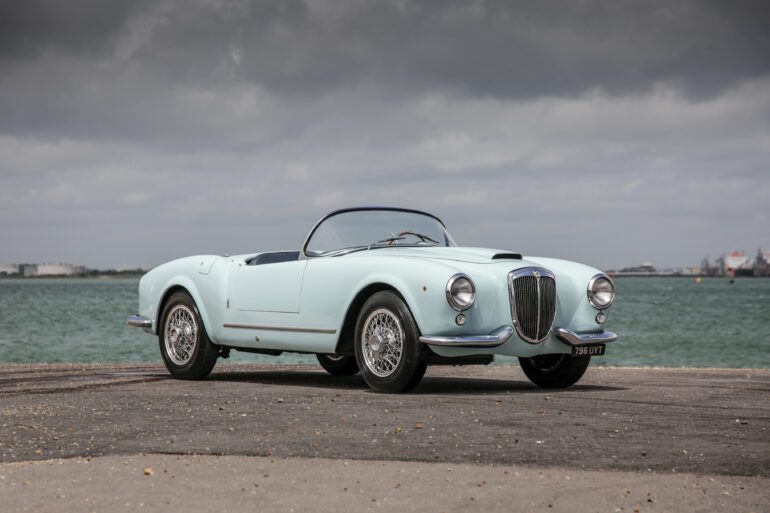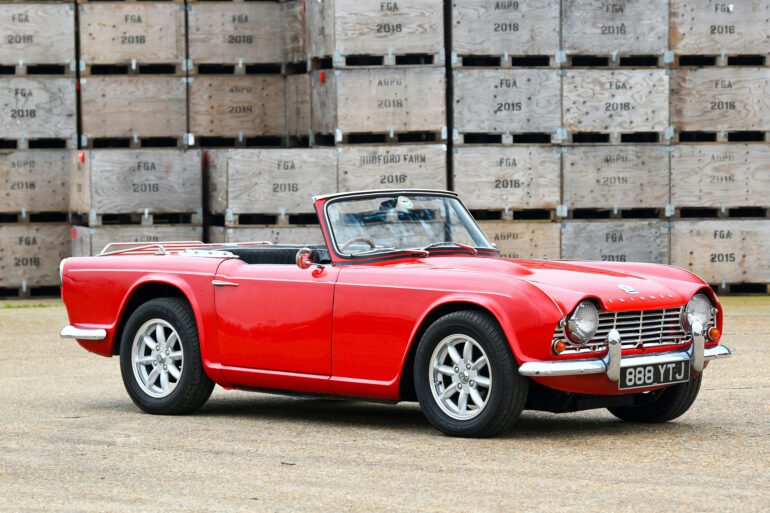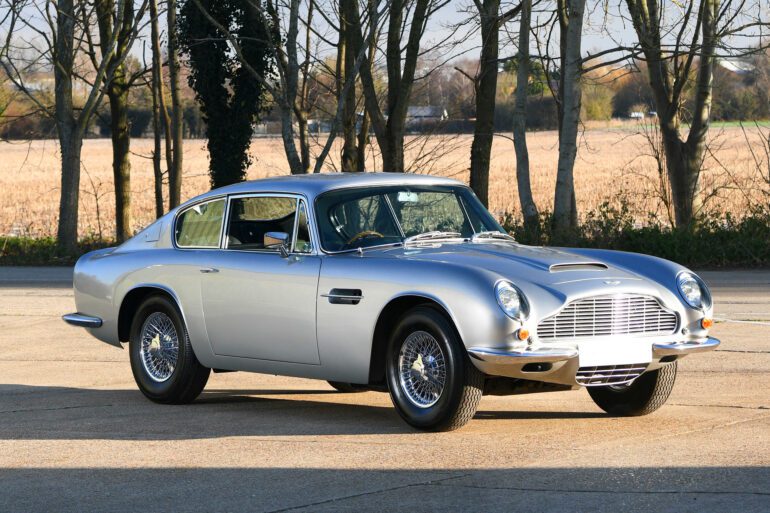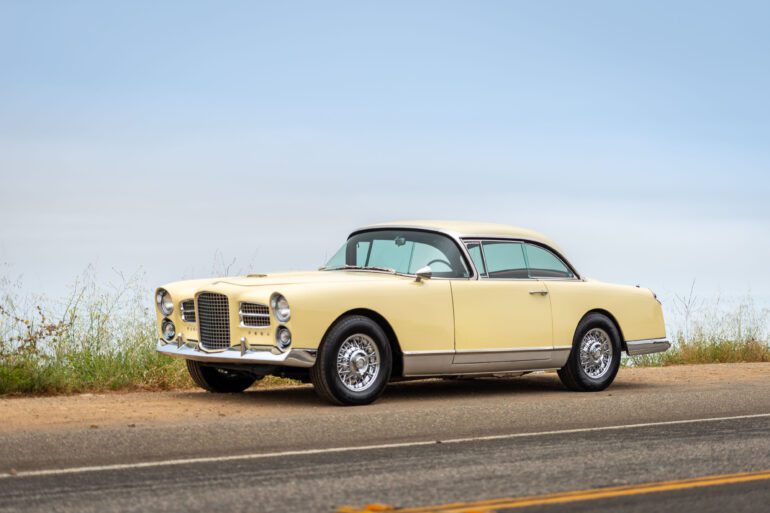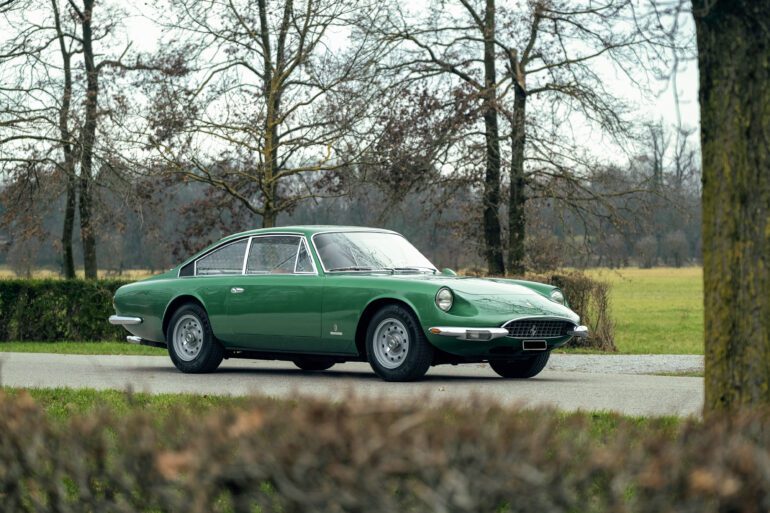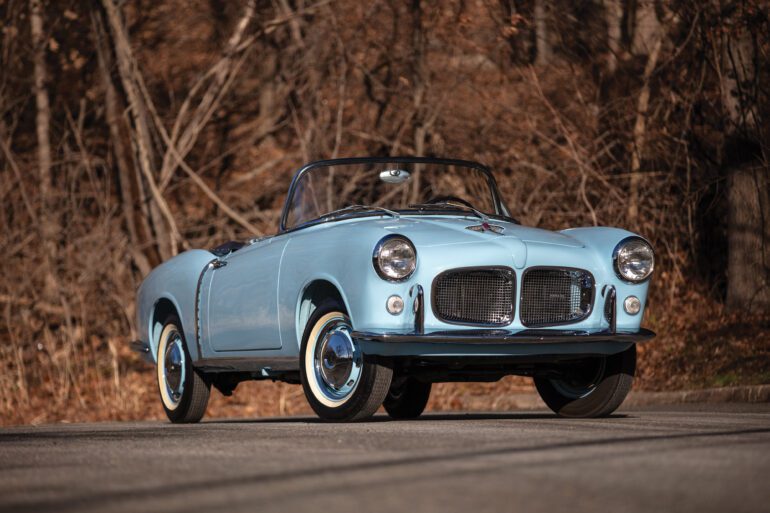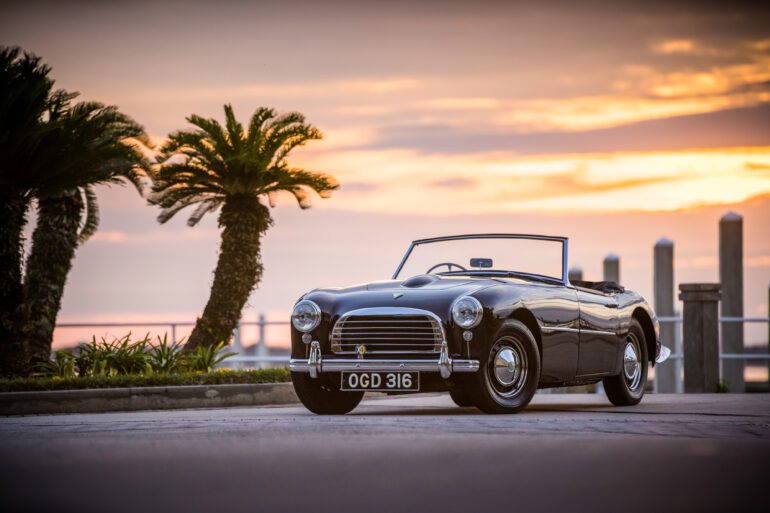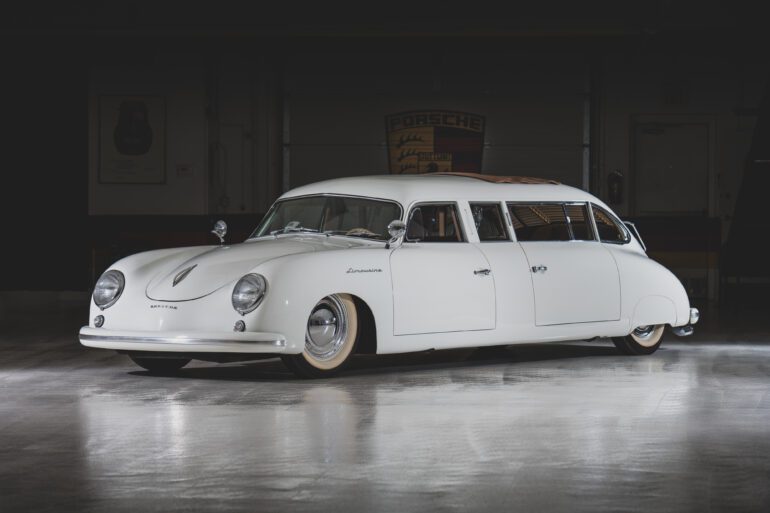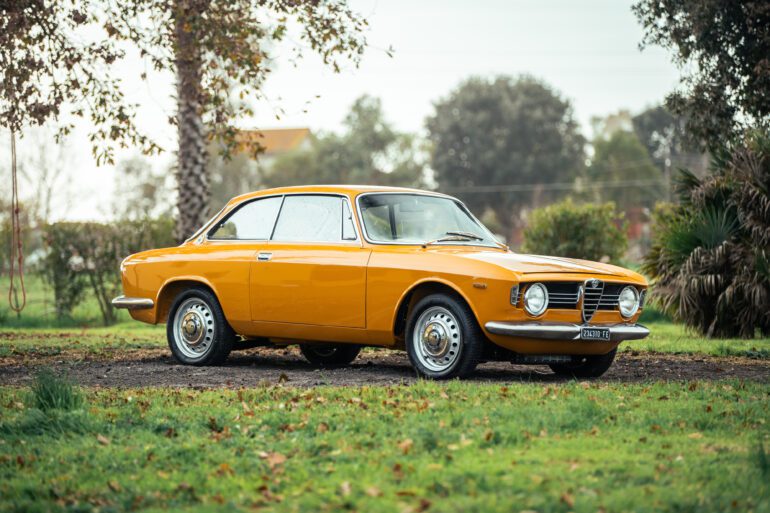1930 Delage D8 C Cabriolet
Coachwork by Henri Chapron
1939 Bugatti Type 57C Stelvio
Coachwork by Gangloff
1937 Packard Super Eight Town Car
Coachwork by Brewster
Your Destination for Classic Collector Vehicles, Muscle Cars, Hot Rods, Street Rods, Vintage Trucks and More.
In 1960, Dodge shifted gears, stepping away from its mid-range position and into the competitive world of economy cars. Their target? Ford, Chevrolet, and even their own entry-level brand, Plymouth. But Dodge’s “economy” wasn’t synonymous with stripped-down or sluggish. The new Dart offered a range of trim levels and a...
In 1953, Packard unveiled the ultra-luxurious Caribbean Convertible. Inspired by the “Pan American” show cars, it aimed to compete with the Cadillac Eldorado. Built on a long, independent-suspension chassis, it housed a powerful 327ci straight-eight engine. Only 1150 Caribbeans were built in 1953-54 before a dramatic redesign. The 1955-56 models...
Born in 1959 Turin, Italy, Intermeccanica started by tinkering with European cars. But founder Frank Reisner craved more. He envisioned American muscle in an Italian suit, leading him to import V8s for his custom chassis. These early creations, the Apollo GTs, laid the groundwork for the legendary Italia. Arriving in...
The Delahaye Type135, launched in 1935, marked a turning point for the brand. This sporty car boasted a powerful 3.2-liter engine and innovative features like independent front suspension. It quickly gained fame on the racing circuit, achieving podium finishes and winning prestigious races like Le Mans. Delahaye continued to refine...
In the mid-1960s, Ferrari sought a 2.0-litre production engine for Formula 2, leading to the creation of the mid-engined Dino. To meet the daunting demand of producing 500 units annually for homologation, Ferrari collaborated with FIAT. This partnership resulted in FIAT producing the Dino’s four-cam V6 engine, spawning a separate...
The Bentley Continental, introduced in 1952, redefined high-speed luxury. Built on the R-Type chassis with a lighter aluminum body, the Continental prioritized weight reduction for maximum performance. Unlike the standard steel R-Type, the Continental boasted a luxurious hand-built body, most notably the iconic wind tunnel-developed fastback design. Power came from...
The Maserati Sebring, launched in 1962, was a luxurious 2+2 coupe based on the successful 3500GT. It marked Maserati’s shift from racing to focus on road cars due to financial difficulties. The 3500GT, designed by Giulio Alfieri, had a powerful engine and impressive handling derived from Maserati’s racing experience. Several...
Ferruccio Lamborghini’s inaugural production vehicle, the Touring-styled 350 GT, made its debut at the 1964 Geneva Motor Show. Crafted by Italy’s esteemed automotive engineers, it boasted a magnificent 3.5-liter, four-cam V12 engine designed by Giotto Bizzarrini and housed within a chassis conceived by Gianpaolo Dallara. With its four camshafts and...
In 1961, Jaguar unveiled the E-Type (known as the XKE in the USA) in its 3.8-liter iteration, causing a sensation with its timeless design and remarkable 150mph top speed. Beyond its eye-catching exterior and impressive performance, the E-Type boasted advanced engineering beneath its surface. Drawing inspiration from the racing D-Type,...
Although Ferdinand Porsche founded his automotive design consultancy in the early 1930s, his name wasn’t associated with a car until 1949, when it adorned one of history’s greatest sports cars: the Porsche 356. Following the original 356 coupé, a cabriolet quickly followed, and in 1952, 15 roadsters were crafted, spurred...
The Mercedes-Benz 540 K, alongside its predecessor the 500 K, stood as one of the most remarkable production models of the 1930s from the Stuttgart firm. Evolving from the 500 K, it shared its independently suspended chassis and boasted a 5.4-liter supercharged straight-eight engine. Spearheaded by ex-racing driver Max Sailer,...
The illustrious Hispano-Suiza, favored by European Royalty, Indian Maharajahs, Hollywood stars, and industrial magnates, was not only impeccably engineered but also emulated shamelessly by leading car manufacturers worldwide. While of Spanish origin, it was the French-built cars of Hispano-Suiza that catapulted it into the forefront of luxury automobile manufacturers post-World...
In the late 1930s and the immediate postwar era, Maserati dominated the realm of small displacement sports and open-wheel formula cars. Transitioning swiftly from the 4-cylinder formula vehicles of the 1930s, Maserati engineered the 1.5-liter 6-cylinder A6G with various bore/stroke configurations, featuring both single and double overhead camshafts. They meticulously...
In 1965, Aston Martin unveiled the DB6, marking the apex of their esteemed line of ‘DB’ six-cylinder sports saloons and often hailed as the quintessential Aston Martin. Succeeding the iconic DB5, the DB6 retained the lineage’s essence while embracing contemporary updates. While it bore familial resemblance to the Touring-styled DB4...
Debuting at the 1953 Turin Motor Show, Lancia’s compact marvel, the Appia, shared styling cues with its larger Aurelia B10 sibling. Spearheading Lancia’s post-war innovations, the Appia bore the mark of renowned engineer Vittorio Jano, formerly of Alfa Romeo, who joined Lancia’s ranks in 1937. At the heart of the...
The BMW 328 wasn’t just a top-tier sports car for enthusiasts; it dominated the 2-liter sports car racing scene across Europe from 1936 to 1940. Owning anything other than a 328 during this period likely meant little chance of victory. With 131 recorded wins, 45 gold medals, and numerous podium...
Debuting at the 1968 Geneva Salon, the Islero evolved from the 400 GT 2+2, itself a descendant of Lamborghini’s first production vehicle, the 1964 Touring-styled 350 GT. Designed by esteemed engineers Giotto Bizzarrini, Gian Paolo Dallara, and Paolo Stanzani, the 350 GT boasted a magnificent 3.5-liter four-cam V12 engine and...
The Maserati 5000GT, a car fit for royalty, originated from a direct request by the Shah of Iran, seeking a potent and exclusive GT vehicle based on the four-cam V-8 engine of the 450S sports racer. Promised within four months, the initial model was to be crafted by Touring of...
After influential roles at Alfa Romeo and Ferrari, where he spearheaded the creation of the iconic 250 GTO, Giotto Bizzarrini embarked on an independent path in 1962. He earned acclaim for his designs at Lamborghini, crafting their potent V12, and at Iso, where he collaborated on the Rivolta before launching...
Between 1951 and 1952, the Ferrari 212 left an indelible mark on the racing scene and the automotive market, with approximately 110 individual chassis finding their way into the hands of eager clients. This versatile model boasted a diverse array of body styles, ranging from lightweight spiders and coupés to...
Lancia’s Aurelia B10 berlina, unveiled at the 1950 Turin Motor Show, marked the brand’s post-war return. Despite its unremarkable exterior, it pioneered groundbreaking technology, evolving through six series over eight years to become the archetype of modern Gran Turismo cars. Led by Vittorio Jano and Francesco de Virgilio, the Aurelia...
In the mid-1950s, Rolls-Royce embraced series production with the Silver Cloud series to stay competitive. The Silver Cloud Standard Steel Saloon, designed by J.P. Blatchley, modernized the classic Silver Dawn. Its factory body became immensely popular, remaining virtually unchanged for over a decade. Despite waning demand, Rolls-Royce engaged both external...
The TR4, introduced in 1961, marked the initial shift in TR’s evolution from a rugged, straightforward sports car to a more refined model. Designed by Giovanni Michelotti, the TR4 boasted a modern bodyshell that updated its styling, complemented by numerous chassis enhancements. Key improvements included rack-and-pinion steering, widened front and...
In 1958, Aston Martin debuted the DB4, initiating a prestigious lineage culminating in the DB6, produced from 1965 to 1969. General manager John Wyer’s pivotal decision to enlist Italian styling expertise from Touring of Milan rather than relying solely on in-house design significantly contributed to the DB4’s acclaim. The foundational...
In March 1958, MG’s Abingdon factory began production of the Sprite, a sports car designed by Donald Healey with the aim of democratizing sports car motoring. The Sprite’s unitary construction bodyshell boasted a distinctive rearward-hinging combined bonnet and wings, crowned by two iconic ‘frog eye’ headlamps, instantly earning it a...
Facel, a French luxury car manufacturer, left an indelible mark with its exclusive line of vehicles, creating approximately 2,900 cars renowned for their luxury, speed, and bespoke craftsmanship. Among them, the Facel Vega HK500 stood out, commanding prices that are on the Rolls-Royce territory and attracting a clientele of elite...
The 1970 Challenger marked Dodge’s late yet thrilling entry into the muscle car arena, spurred by the success of the Ford Mustang’s debut in 1964, appealing particularly to younger demographics. Priced slightly higher than its Plymouth Barracuda counterpart, which had already established its presence akin to the Mustang, the Challenger...
Introduced in 1965 as Plymouth’s premier model in the mid-size Belvedere lineup, the Satellite debuted with Chrysler’s renowned ‘Hemi’ 426ci (7.0-liter) V8 engine in 1966. Adding approximately $1,000 to the base price, this ‘Street Hemi’ engine purportedly generated 425bhp at 5,000rpm and 490lb/ft of torque at 4,000 revs, though these...
By the mid-1960s, Ferrari responded to market demands with half of its production featuring four seats. Following the success of the 1960 250 GTE, Ferrari unveiled the 330 GT 2+2 in January 1964. With a longer steel tube chassis compared to its predecessor, the 330 boasted independent front suspension and...
In the sea of somber pre-war British saloons, the Lagonda LG45 Rapide emerged as a stunning anomaly, its sleek contours, squared radiator, and distinctive exterior features setting it apart. Crafted by the visionary Frank Feeley, who later shaped the iconic Aston Martin DB2, the Rapide exuded boldness and elegance, capturing...
The Mercedes-Benz 280 SE 3.5 epitomizes exclusivity in the classic car realm. Priced at $13,500 in 1970, it surpassed its sedan counterpart by $3,500 and even doubled the cost of a Cadillac Deville Coupé, making it a rare luxury choice. Introduced in September 1969, the 280 SE Coupé/Cabriolet and 300...
In the post-World War II era, microcars were predominantly practical but lacked style and comfort. However, a few forward-thinkers saw potential in blending engineering prowess, affordability, and aesthetic appeal in small cars. One such pioneer was Captain Raymond Flower, a former British racing driver. Teaming up with his brothers and...
For nearly two decades, Fiat’s mid-range 508 and 1100 models served as the staple choice for middle-class Italians. In the mid-1950s, Fiat introduced a Turismo Veloce (fast touring) variant featuring higher compression and a two-barrel carburetor, along with a two-seat cabriolet to complement the sedan. Dubbed “Trasformabile” (Italian for convertible)...
The Swallow Doretti, born from the collaboration between Frank Rainbow of the Swallow Side-Car Company (SSCC) in Coventry and Californian car distributor Dorothy Deen, was a whimsical creation. Hand-built in England, it featured an aluminum body over a tubular Moly chassis, borrowing components from the Triumph TR2 model. With its...
The Stutz legacy holds a prominent place in American automotive lore, surviving the Great Depression through motorsport triumphs and innovative engineering. Revived in 1968 by James O’Donnell and Virgil Exner, the brand aimed to create a distinctive luxury car. Exner, renowned for his influential designs, including the Chrysler 300, envisioned...
Porsche’s journey from inception to producing a four-door sports car spanned nearly eight decades, with limousines not even a consideration in 1950s Zuffenhausen. However, a bespoke 356 limousine crafted for special occasions offers a glimpse into an alternative reality where Porsche explored different automotive avenues, diverging from its sports car...
Alejandro De Tomaso embarked on his racing journey in Argentina in 1951 before transitioning to Italy to drive for Maserati and OSCA, the latter founded by the Maserati brothers post-sale. Inspired by this rich racing experience, De Tomaso established De Tomaso Automobili in Modena, Italy, in 1959. Initially, the company...
Alfa Romeo revolutionized the automotive landscape with the 1.3-liter 750-Series Giulietta in 1954, epitomizing the ethos of ‘small car, big performance’ that would define the brand’s finest offerings. This formula persisted through subsequent iterations, including the improved 101-Series from 1959 and the transition to the Giulia range in 1962. While...
The Mangusta, one of the pioneering supercars, marked De Tomaso’s entry into the automotive scene in 1967, solidifying the company’s reputation. Alejandro De Tomaso’s racing background in Argentina, followed by stints with Maserati and OSCA in Italy, fueled his ambition to establish De Tomaso Automobili in Modena, Italy, in 1959....
Unveiled at the 1966 Turin Motor Show, the Ferves Ranger emerged as an unusual Italian interpretation of the compact off-roader concept. Designed by Carlo Ferrari, its name originates from the acronym FERrari VEicoli Speciali (“Ferrari Special Vehicles”). Combining features from the Fiat 500 and Fiat 600, the Ranger boasted an...


